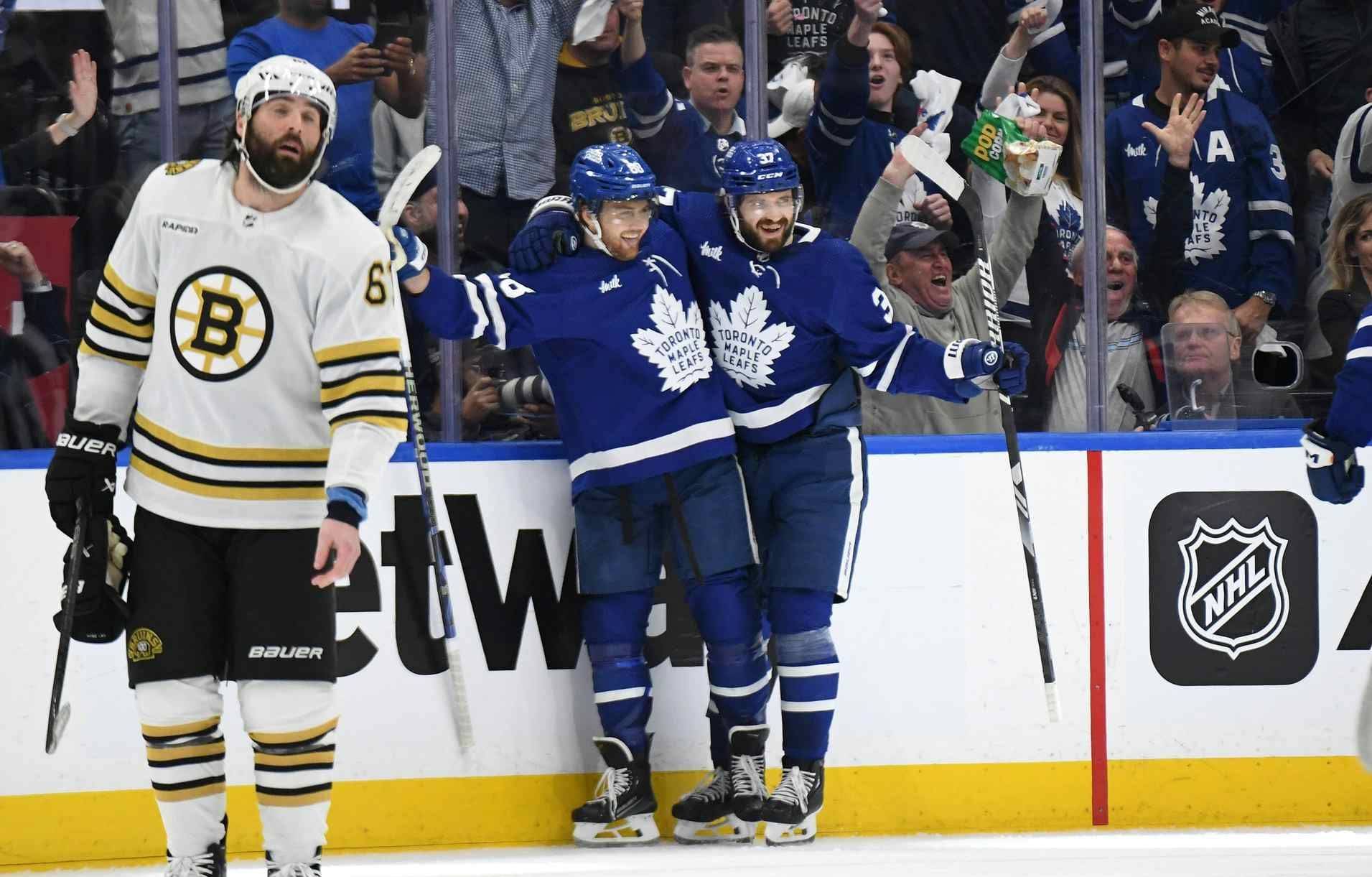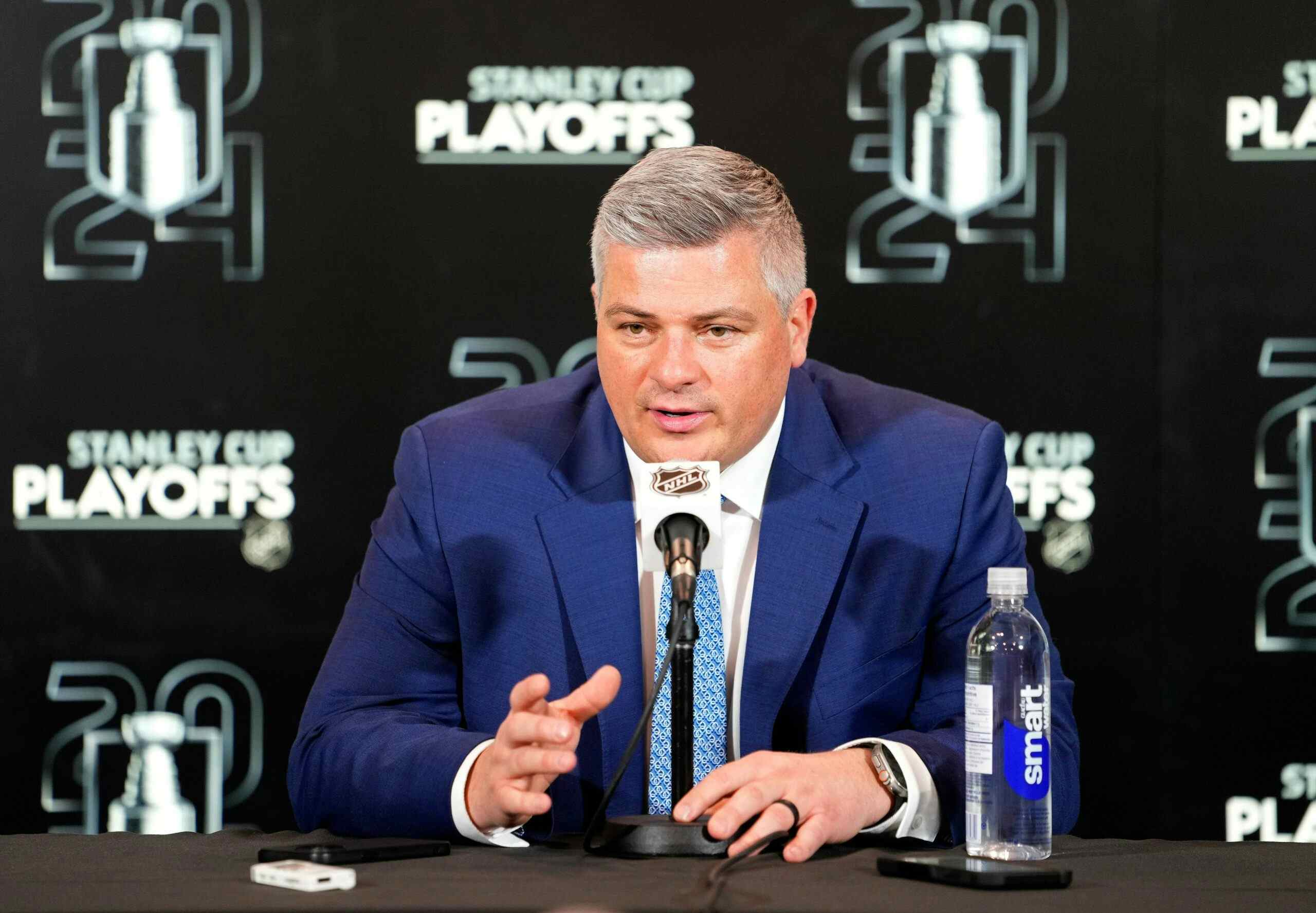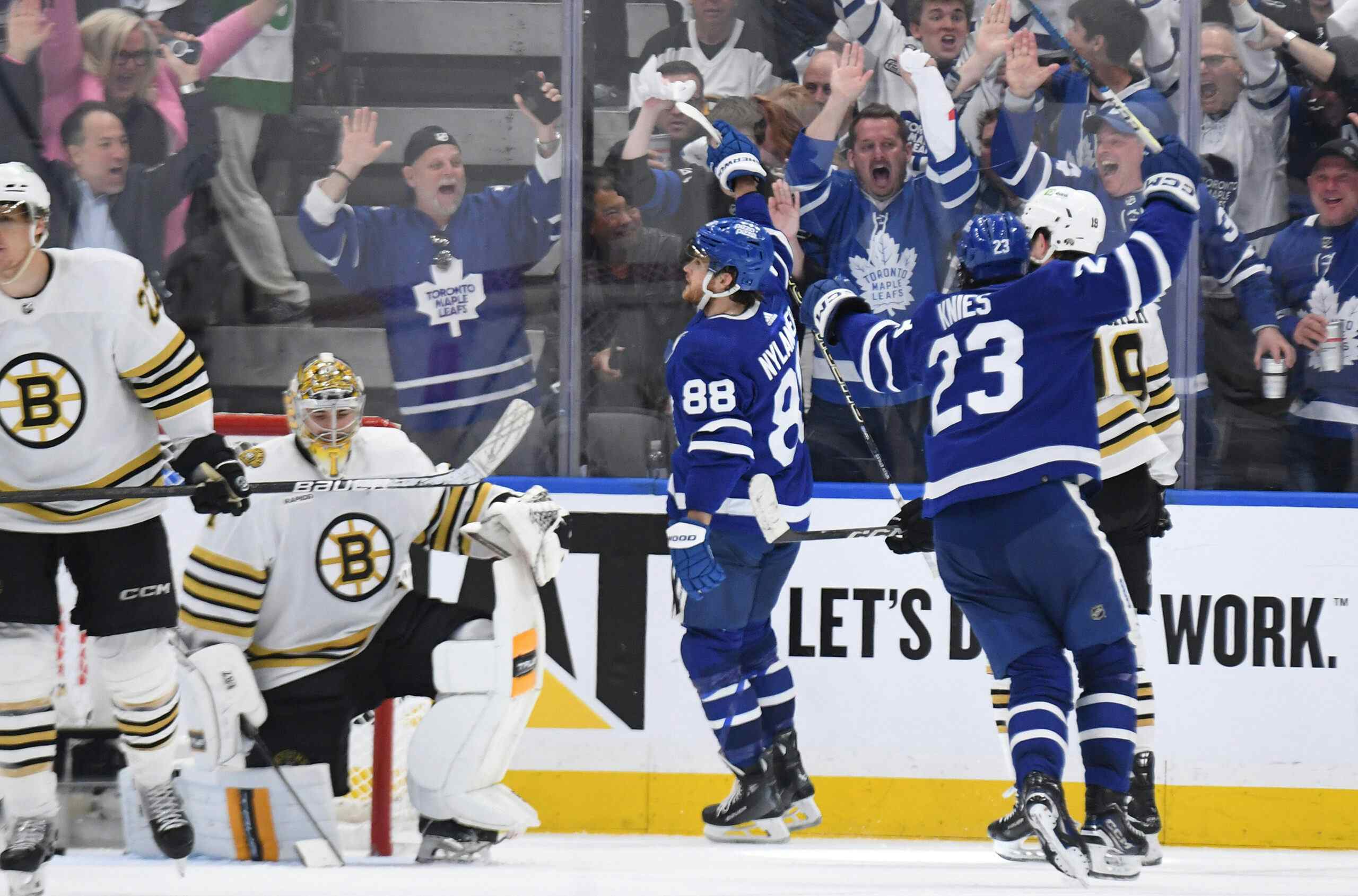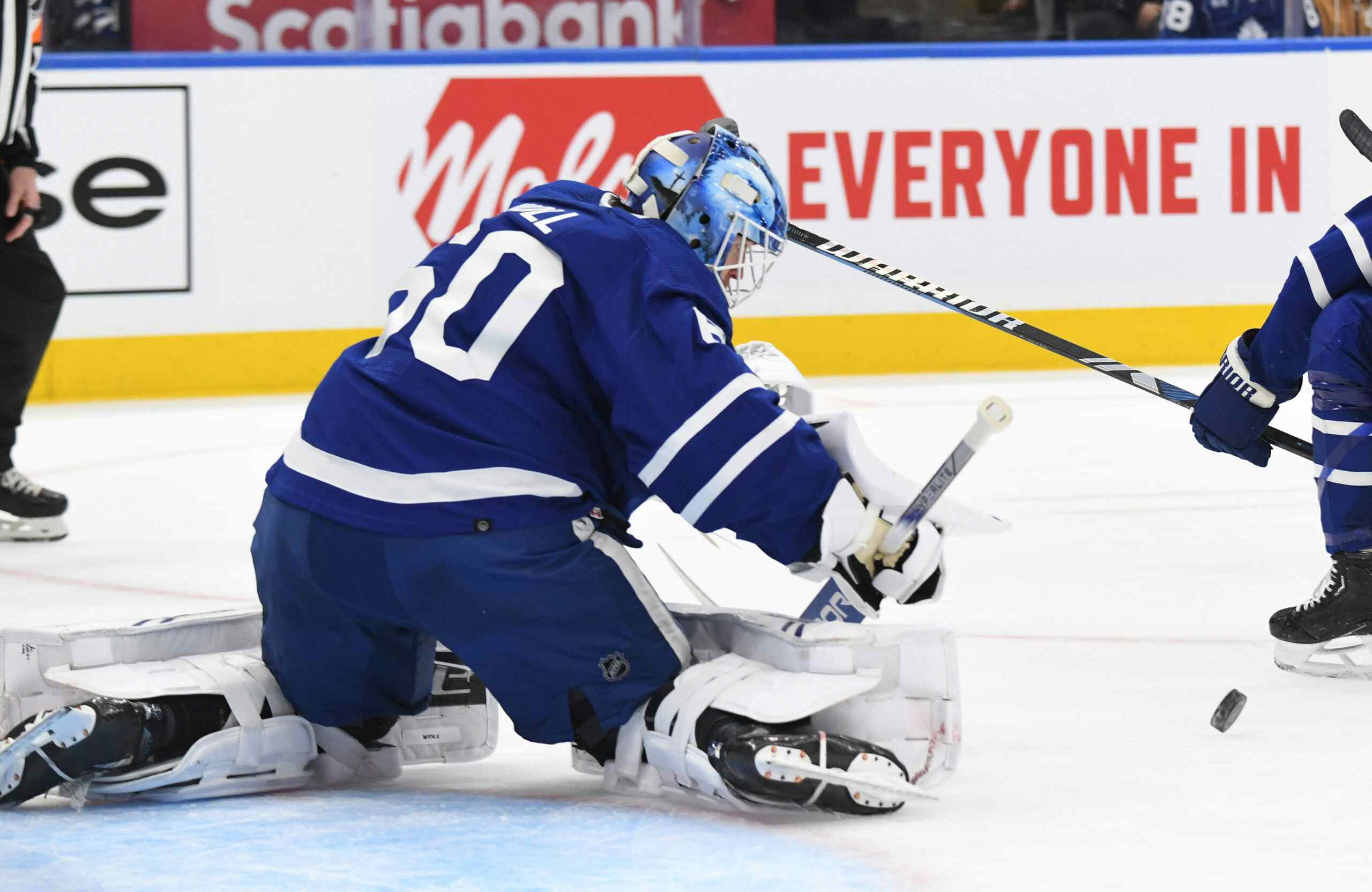Relive the 2006-07 Toronto Maple Leafs Season
If 2005/06 was the season that proved that the Leafs weren’t qiute thinking about the radical changes ahead for the NHL, the year that followed was one of the last opportunites they had to take advantage of their short-sightedness. To be fair, a lot of things came together for this team, and 90% of what was going on made it one of the best Leafs teams of the past twenty years. However, the “bad” 10% was enough to push the team into irrelevance.
Results
| GP | W | L | T | OTL | PTS | PTS% | GF | GA | DIF | SH% | SV% | PDO |
|---|---|---|---|---|---|---|---|---|---|---|---|---|
| 82 | 40 | 31 | 0 | 11 | 91 | 0.562 | 258 | 269 | -11 | 9.5 | 891 | 986 |
Third in Northeast, Ninth in East, 18th Overall
A shootout. A shootout is all that separated this team from making the playoffs, and it wasn’t even their own, but we’ll talk about that later. The Leafs managed to win a decent amount of hockey games while scoring the ninth-most goals in the NHL, but were ultimately taken to the cleaners on the other half of the ice. Despite having the second best shots-for percentage in the NHL, Toronto’s obnoxiously low 0.891 save percentage on the year brought their goal differential down to a disappointing -11.
Special teams were just as mixed of a bag. The powerplay was in the league’s mid-range, with a goal or two being all that was needed to bring them near the top, while the penalty kill was bottom three. I think you can begin to see who the scapegoat is for this team.
Notable Transations
As Cat was super eager to talk about yesterday, the hallmark move for this season was the “upgrade” the Leafs attempted in goal. With Ed Belfour not getting any younger, the team saw a regression in the 05/06 season as a warning sign and decided to buy out his contract. To fill the void, the Leafs pulled off a blockbuster trade with the Boston Bruins at the draft, acquiring Andrew Raycroft in exchange for Tuukka Rask.
Now, a lot of people are quick to point out that Rask has become, depending on the day of the week, the best or second best goaltender on the planet, and still has at least a decade left in his career. But we all know that proper player development goes a long way, especially when talking about goaltenders. I don’t think it takes a rocket scientist to conclude that Rask was still a better prospect to build upon than Justin Pogge, but it’s not worth giving the Leafs grief for what they gave up.
What they got back, though? Few will defend Andrew Raycroft, and that’s largely because he failed to defend the crest on his jersey while playing his position
Since we’ll spend most of this article beating up on Raycroft, it’s worth noting that the Leafs did other things over the course of the season as well. Toronto replaced Aki Berg, Alexaner Khavanov, and Luke Richardson with Hal Gill and Pavel Kubina; two big, imposing defenders who, while they weren’t “modern players”, were still upgrades on the non-NHLers they replaced. Eric Lindros’ tragic injury heartbreak was replaced by Michael Peca’s tragic injury heartbreak, and the team brought in Boyd Devereaux and Bates Battaglia to fill in for Jason Allison and Tie Domi.
Midway through the year, the Leafs made a couple of tweaks. They felt that they were good enough in goal (!?) to ship out Mikael Tellqvist for Tyson Nash (?!) and a 4th round pick, and just three months later, made a second trade with the Coyotes to once again acquire Yanic Perreault. They also picked up another former Leaf in Travis Green via a waiver claim in January.
The most successful of these moves were the depth ones. Devereaux ended up being one of the team’s best players down the strech and lead the team in even strength points per sixty, while Perreaux immediately produced points at a similar rate despite limited minutes. Kubina and Gill ended up being the weakest point producers on the team, but as defensive defencemen on one of the highest scoring Leafs rosters of the era, you can give it a semi-pass.
Season Recap
This team missed the playoffs because Andrew Raycroft and Jean-Sebastian Aubin were terrible goaltenders.
Raycroft played 72 games that year, faced 1931 shots, and allowed 205 goals. That gave him a save percentage of 0.894, which is very bad. As a result, the Leafs finished 19th in the NHL in goal differential. Aubin was even worse; his ten game stretch to close the year prior was fun to watch, but in twenty games this time around, he put up a horrendous 0.876 SV%.
But what if they had goaltending that didn’t resemble a tire fire?
| GP | SA | SV | GA | SV% | Added GD | |
|---|---|---|---|---|---|---|
| Andrew Raycroft | 72 | 1931 | 1726 | 205 | 0.894 | 0 |
| 2007 League Average | 72 | 1931 | 1747 | 184 | 0.905 | 21 |
| 2015 League Average | 72 | 1931 | 1763 | 168 | 0.913 | 37 |
| 2013 James Reimer | 72 | 1931 | 1784 | 147 | 0.924 | 58 |
| 2015 Carey Price | 72 | 1931 | 1801 | 130 | 0.933 | 75 |
| Jean Sebastien Aubin | 20 | 371 | 325 | 46 | 0.894 | 0 |
| 2007 League Average | 20 | 371 | 335 | 36 | 0.905 | 10 |
| 2015 League Average | 20 | 371 | 338 | 33 | 0.913 | 13 |
| 2013 James Reimer | 20 | 371 | 342 | 29 | 0.924 | 17 |
| 2015 Carey Price | 20 | 371 | 346 | 25 | 0.933 | 21 |
| Goal Differential | GD Rank (East) | GD Rank (Overall) | |
|---|---|---|---|
| Raycroft/Aubin | -11 | 10th | 19th |
| 2007 League Average | 20 | 5th | 14th |
| 2015 League Average | 39 | 3rd | 8th |
| 2013 James Reimer | 64 | 3rd | 3rd |
| 2015 Carey Price | 85 | 1st | 1st |
The Leafs needed a slightly above average goaltender to become one of the best teams in hockey. The odds of this being reflected in the standings are very high; sixteen of Toronto’s losses were by one goal (five regulation), and six were by two. It’s pretty safe to assume that at least one of those losses turns into a win, and the team makes the playoffs. However, the odds lean towards a few more victories than that; Toronto likely heads to faces the Atlanta Thrashers in the first round of the playoffs. a team swept by the New York Rangers in reality.
It’s amazing how stuck this team was with these two, when you look back. Take their biggest losing streak of the year; seven consecutive losses between November 25th and December ninth. Raycroft started six of these games, and allowed at least three goals in all of them. Even as they made their last-minute push for the playoffs, the two combined to allow 23 goals in the final five games of the season. It’s a miracle that they managed to get even remotely close down the stretch.
Thankfully, this stumble to the edge lead to one of the greatest regular season Leafs games we’ve ever seen, but unfortunately, also lead to the most heartbreaking non-Leafs game in Leafs history.
Team Scoring Leaders
| Player | GP | G | A | PTS | MINS |
|---|---|---|---|---|---|
| Mats Sundin | 75 | 27 | 49 | 76 | 1535 |
| Tomas Kaberle | 74 | 11 | 47 | 58 | 1915 |
| Bryan McCabe | 82 | 15 | 42 | 57 | 2200 |
| Alexei Ponkarovsky | 71 | 21 | 24 | 45 | 1214 |
| Darcy Tucker | 56 | 24 | 19 | 43 | 996 |
| Jeff O’Neill | 74 | 20 | 22 | 42 | 1016 |
| Kyle Wellwood | 48 | 12 | 30 | 42 | 798 |
| Matt Stajan | 82 | 10 | 29 | 39 | 1324 |
| Alex Steen | 82 | 15 | 20 | 35 | 1287 |
| Nik Antropov | 54 | 18 | 15 | 33 | 896 |
| Bates Battaglia | 82 | 12 | 19 | 31 | 1021 |
| John Pohl | 74 | 13 | 16 | 29 | 840 |
| Chad Kilger | 82 | 14 | 14 | 28 | 1189 |
| Ian White | 76 | 3 | 23 | 26 | 1408 |
| Pavel Kubina | 61 | 7 | 14 | 21 | 1300 |
| Hal Gill | 82 | 6 | 14 | 20 | 1549 |
| Boyd Devereaux | 33 | 8 | 11 | 19 | 504 |
| Carlo Colaiacovo | 48 | 8 | 9 | 17 | 862 |
| Michael Peca | 35 | 4 | 11 | 15 | 609 |
| Yanic Perreault | 17 | 2 | 3 | 5 | 165 |
Not a lot of surprise here. Mats Sundin is still doing his thing, leading the team in goals and points and continuing to be the best player to ever wear blue and white. Tomas Kaberle has another stupendously good year, quickly proving his new five year contract to be a bargain. McCabe also produces at a very high rate, though the drop down from the year before and some goaltending-enhanced costly mistakes lead to some questioning his defensive capabilities.
Kyle Wellwood is a pretty big story here, in the sense that he has the best year of his career. When you look back and isolate his even-strength production, however, it doesn’t look quite as good. Guys like Yanic Perreault, Nik Antropov, and even Jeff O’Neill produce at a more efficent rate, though Wellwood’s 6.12 points per sixty on the powerplay is flat out astonishing. Also, something that proved unrepeatable in future years.
Rethinking the Team
- Ed Belfour signed with the Florida Panthers and had a 0.902 SV% in his final NHL season. Better than Andrew Raycroft and Jean-Sebastien Aubin.
- John Grahame signed with the Carolina Hurricanes as an unrestricted free agent and had a 0.897 SV%. Better than Andrew Raycroft and Jean-Sebastien Aubin.
- Martin Gerber signed with the Ottawa Senators as an unrestricted free agent and had a 0.906 SV%. Better than Andrew Raycroft and Jean-Sebastien Aubin.
- Johan Hedberg signed with the Atlanta Thrashers as an unrestricted free agent and had a 0.898 SV%. Better than Andrew Raycroft and Jean-Sebastien Aubin.
- Patrick Lalime signed with the Chicago Blackhawks as an unrestricted free agent and had a 0.896 SV%. Better than Andrew Raycroft and Jean-Sebastien Aubin.
- Jamie McLennan signed with the Calgary Flames as an unrestricted free agent and had a 0.895 SV%. Better than Andrew Raycroft and Jean-Sebastien Aubin.
- Dominik Hasek signed with the Detroit Red Wings as an unrestricted free agent and had a 0.913 SV%. Better than Andrew Raycroft and Jean-Sebastien Aubin.
- Manny Legace signed with the St. Louis Blues as an unrestricted free agent and had a 0.907 SV%. Better than Andrew Raycroft and Jean-Sebastien Aubin.
- Craig Anderson was traded to the Florida Panthers for a 6th round pick and had a 0.931 SV%. Better than Andrew Raycroft and Jean-Sebastien Aubin.
- Marc Denis was traded to the Tampa Bay Lightning for Fredrik Modin and Fredrik Norrena. Denis had a 0.883 SV%, which was better than Jean-Sebastien Aubin. Norrena had a 0.904 SV%, which was better than Andrew Raycroft and Jean-Sebastien Aubin.
- Dany Sabourin was claimed by the Vancouver Canucks off of waivers before opening night and had a 0.906 SV%. Better than Andrew Raycroft and Jean-Sebastien Aubin.
- Martin Biron was traded to the Philadelphia Flyers at the trade deadline for a 2nd round pick (31st overall). He finished the year with a 0.908 SV% on a last-place Flyers roster.In that same stretch, Jean-Sebastien Aubin was a 0.891 and Andrew Raycroft was a 0.890.
None of these guys would have cost the Leafs Tuukka Rask. None of these guys would have cost the Leafs a playoffs spot. None of these guys would have cost much of anything.
Play the season again with real goaltenders, and we see back at this team just as fondly as the guys from the early 90’s.
Recent articles from Jeff Veillette





